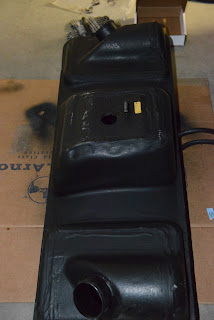The Mercedes Gelandewagen has been on the road, and off, since 1979. Even with the "makeover" in 2019, the truck maintains it's iconic rugged look and exceptional visibility. While European drivers have been enjoying G-Wagons for years, it was not until 2002, when Mercedes-Benz started selling the truck in the US, could you run down to your MB dealer in the states and buy one.
Now with the availability to import cars over 25 years old, including the German and Austrian military surplus competing with the older US G-Class models are available on the 2nd hand market, the decision for those who want a G can be complicated. The basic question becomes: "Do I get an older Euro import or North American Spec (NOS) G?" As the owner of several of each, I'm going to give you my perspective.

I have owned 3 G's and driven about 15 different versions from a 1985 300G with a turbo upgrade to the AMG G55, and can tell you the experience is more the same than different. From 1979 through 2018, all Gelandewagens feature dual solid axels, ladder on frame construction, coil suspension and 4x4 capability. All of this topped off with a tall, boxy interior with huge windows. As big as the truck looks, it is pretty narrow and the interior can be cozy in the back seat. Think of all G-Wagons as a heavy, 4x4 truck only narrower and shorter. It may be the best compact truck ever produced.
The W460/W461

The W460 and military W461 are very similar in style, build and capability. Having owned both, I can say that there is almost no difference in driving W640 from the 80's and just about all of the W461s. They are excellent off road with a soft easy going way about them. They are comfortable in rough terrain and extremely capable. While you can get variants in gas and diesel with automatic or standard transmissions, I personally prefer the standard diesel versions with the 3L inline 5 engine. Some feel that the late 80's and early 90's were a golden era of Mercedes engines with standouts like the DOHC 2.8, the 3.0 Diesel and the 3.0 straight 6 found in the 300E. All of these engines found their way into early G's. I know some off-road enthusiasts prefer automatic transmissions, but the limited horsepower and high RPM of the MB diesel make the manual a must for road driving. That being said the 300GE, while very rare in the US, is a reliable road truck with very good power and very good high-speed cruising capability.
In normal drive mode, these trucks are rear-wheel drive. It is easy to engage 4-wheel drive while moving simply by shifting the transfer case. In 4 wheel drive mode, the front and back axles are locked together. This is good for off-road, but not so good for road driving. When braking at highway speeds, it is necessary to allow the front breaks to do most of the stopping. Locking the front axes to the rear defeats the proper distribution of breaking and can cause fishtailing. This can be dangerous in snow and wet conditions especially at high speeds.
Because the truck is heavy, you won't see much in acceleration or top speed. Mountain highway driving can be frustrating, however, long drives on level ground will allow you to cruise at 65 MPH even without overdrive.
Off-road is where the truck is amazing. With the ability to lock the front and rear axles from the inside at any time is really nice. I don't know that I have ever been able to get this truck stuck. It does a very good job of keeping all four wheels on the ground and can cross some pretty deep water. I've even towed a trailer and while not fast, the OM614 inline 5 has plenty of torque.
Pros: Great torque, excellent off-road capability, rear and forward locking axels on most models, no computers, the awesome OM617 on the 300GD will run forever, easy to get parts, low purchase price, relatively good fuel economy and easy to fix. Basically your perfect zombie apocalypse vehicle.
Cons: Spartan interior, prone to body rust, poor acceleration, limited top speed, loud on the road, spongy ride that works well off-road, not good on the highway in snow or rain.
Summary: While not the best as a daily driver, if you are looking for a special purpose off-road vehicle, hunting car or weekend fun truck, I found the W461 to be a far better experience than a Jeep Wrangler and much more comfortable off-road. If you want a W640, consider one of the well maintained former military trucks. Military trucks often have low miles/kilometers and are very well maintained compared to the civilian versions. If you are thinking of getting a W640 and doing an engine swap for more power, consider simply getting a newer US Spec truck and enjoy.
NOS G-Class
For the US market, Mercedes-Benz took the G-Wagon truck and turned it into a family urban assault vehicle. Fortunately, unlike the GM Hummer that was made to look like a Humvee on a pickup truck chassis, the G-Class is actually made alongside the military version with the same frame and body. All of the G-Class sold in the US since 2005 share some common traits. They all have V8 engines, automatic transmissions, some degree of an upgraded interior, creature comforts and they have been modified for road use. While still very capable off-road most are shipped with wheels and tires best suited the highway.
Road driving is very nice although truck-like. If you can afford the fuel, they work very well for a daily driver. They keep the spongy soft ride except for the AMG versions that are outfitted with stiffer suspension for a better road handling. In our household, the stock G55 became a favorite for grocery shopping because of the ability to park it in small spaces and accessibility of the cargo area. All G-Class trucks have good powerplants and the AMG versions accelerate crazy fast for a truck. A friend of mine calls my G55 Saque because he says it moves really well for a large heavy truck. We also have an F150 with the EcoBoost engine and in the mid 400hp range that is crazy quick but feels HUGE next to the G55. I do wish the G gas tank was larger because on long road trips, with a fuel economy running around 12 MPG, I have to stop frequently for fuel.
The newer trucks also feature the awesome Mercedes-Benz interior experience. Decent stereo, hands-free Bluetooth, cruise control, heated/cooled leather seats, lots of airbags, mostly quiet ride at lower speeds, sunroof, dual mode climate control, turn lights and even a backup camera make the truck almost refined. Heck, it is almost a nice date car.

Off-road, the car is crazy capable but you will find the AMG versions a little stiff. Also, AMG decided to lower the truck 2" to improve cornering on the road. This allows the truck to actually perform a little better on the road. Unfortunately, it means you have to be careful about driving off-road. The clearance is still more than enough to handle most situations and the engine is plenty powerful, but you should at least fit the truck better off-road tires and a modest 2" lift if you plan to take the car on many adventures.
Unlike the older G-Wagons, the newer models feature all-wheel drive as a default driving mode rather than rear-wheel. This combined with the ABS braking is a huge plus in the snow and road driving. With electronic locking differentials, the driver is prevented from engaging 4-wheel drive mode unless the transfer is set to low. That means on any truck after 2005 the transfer case needs to be set to low to lock the transfer case, front or rear axels unless and then only in a particular order. Transfer case first, then back axel, and only then the front. The nice thing is that as soon as you lock the transfer case, the computer and ABS is disengaged and you can drive this like a normal truck. OLD SCHOOL BABY!
If you plan to drive off-road often, get some Hutchenson beadlocks, off-road tires, put in some portal axels and you will have one of the most bad-ass and most capable off-road setups available. Can you say four-by-four-squared?
Pros: Nice around town, good daily driver, solid feel, great driving experience, capable off-road, lots of power, amazing in the snow, lots of visibility, very reliable, crazy good engineering and rust-resistant body. Honestly, they are fun to drive.
Cons: Horrible fuel economy, stiff for off-road, side pipes not really practical, people assume you are a jerk.
Summary: Most people who purchased the G-Class trucks, used them as a second car and almost never took them off road. You can find some low mileage, accident-free examples that can make this a compelling option. If you are looking for an off-road setup get the G500 or G600 put some beadlocks, upgrade the shocks. some off-road tires and GO. Think of all those people who get Wranglers and drop an LS engine in and upgrade the suspension. Your G-Glass will probably get similar performance, be a great daily driver and ultimately cost less that an extreme Wrangler mod.
The Answer is?
It really depends on what you are looking for. I've never had anyone stop me when driving my G55 and say, "cool truck" but the in the 300GD I get comments all the time, mostly "What is that?" So if you are looking for the cool factor, go vintage for sure. If you are looking for a nice driving experience and are planning to have it as a daily driver, get a newer G-Class. If driving often in the snow and ice, get a newer one with AWD standard and ABS breaks. Both new and old will serve you well off-road as long as you upgrade the tires on the G-Glass and if getting the AMG version consider lifting it a couple of inches and get some real off-road wheels/tires for off-road use.
That being said, I wish MB would sell the BluTec, PUR of Professional versions in the US. That would be my first choice!





























